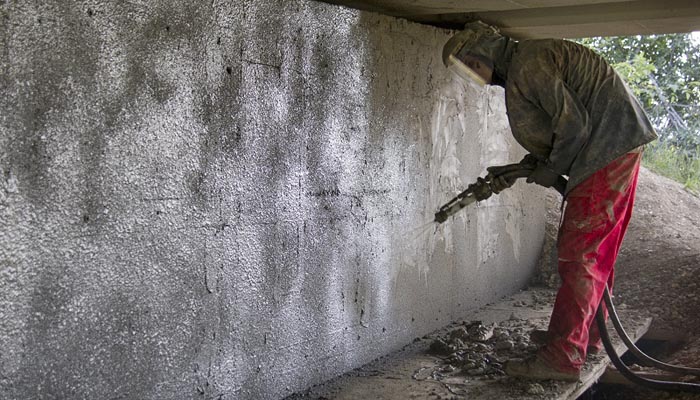If you have any construction work going on, you should try using spray on concrete. This is a type of concrete conveyed in a closed hose to the installation site, where it is pneumatically applied from a spray nozzle and compressed by the impact energy.
Today, this is mainly used for the repair and reinforcement of concrete components, for site and rock consolidation, for temporary installation on major construction sites, and in tunnel construction, as well as for creating natural surfaces on recreational and sport climbing facilities.
Because of the peculiarities of the process and the required equipment, this concrete is usually applied by specialized companies. The deployed personnel must have a so-called jet license.
How is spray on concrete applied?
The method has the advantage that no or only one-sided framework is required and compacting after the application of the concrete is eliminated. Also, a good adhesion to sufficiently pre-treated application surfaces is achieved. In addition, the possibility of overhead concrete is given too. During the injection process, a part of the injection molding, the so-called rebound, bounces off.
Since, initially, the coarse fractions of the aggregate bounce off the solid surface, a concrete layer with increased fine grain and cement content remains. The fine portions of the first layer become entangled by the impact energy with the substrate, resulting in a viable adhesive bridge for the subsequently applied layers.
With careful nozzle guidance, the application process leads to a compaction of the concrete. The largely void-free concrete is dense, resilient, and protects the contained reinforcing steel from corrosion.
Dry Shot Vs Wet Shot Concrete
Spray on concrete is broadly of two types – dry and wet shot:
Dry Shot Concrete
In the dry spraying process, cement, aggregates and, if appropriate, pulverulent additives are dry mixed into a dry-spraying machine and transported in a compressed-air stream (thin-stream conveying) through a pipe or hose line to a spraying nozzle. Only in the nozzle area, the dry mixture is provided with the necessary addition of water and possibly liquid additives.
Then, it is accelerated at the same time for application through a continuous jet. This method is used, for example, in the refurbishment of natural stone masonry in historical buildings.
Wet Shot Concrete
In the wet spraying process, cement, aggregate, and water are mixed together and conveyed to a spray nozzle by means of a concrete pump (dense phase conveying) or compressed air (thin stream conveying). For conveying spray on concrete in the dense phase method, a flux has to be added to the concrete mixture and the mixture at the spray nozzle has to be accelerated to the necessary exit velocity by the use of compressed air.
Due to the soft consistency, the addition of a liquid accelerator in the spray nozzle is still necessary, which is then scattered by the supplied compressed air. Thus, it is distributed in the mixture. The wet spraying process makes it easier to achieve a consistent quality.
Advantages of Spray on Concrete
Advantages of dry spraying
- Low investment
- Flexible
- The amount of water can be adjusted to improve the adhesion of the concrete to overhangs
- Lighter hoses with a smaller diameter (also easier to carry by hand)
- Work stoppages are possible without any problems
- Increased processing time due to longer holding of the dry mix
- Spraying in confined spaces possible
- Promotion over distances up to 1400 meters (ideal distance about 100 meters)
- Low cleaning effort of the hoses
Advantages of wet spraying
- Low dust formation
- Larger order performance
- Better homogeneity of the mixture
- Less loss due to rebound (here: 10 to 20%, with dry spraying on average 20 to 25%)
- Constant water content by defined w / c value
Thus, it can be concluded that spray on concrete is a great option for different kinds of construction works.

